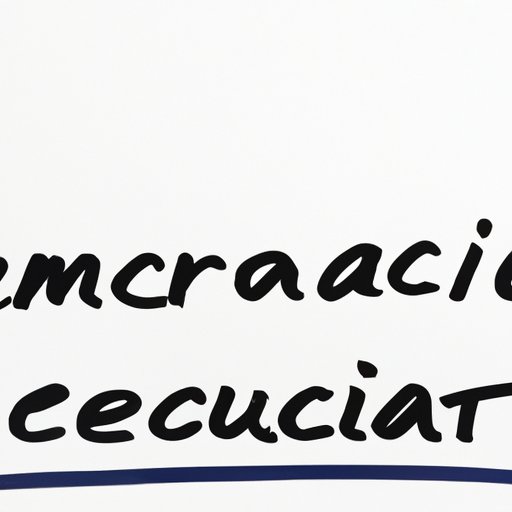Introduction
Cultural appropriation and racism are two issues that have been gaining a lot of attention in recent years. With the rise of social media, there is an increased awareness of these issues and their impact on society. In order to better understand these issues, it is important to define them and explore how they manifest in everyday life.

Definition of Cultural Appropriation and Racism
Cultural appropriation is defined as “the act of taking or using elements of one culture by members of another culture” (dictionary.com). This can include clothing, language, music, art, and other aspects of culture. The term “cultural appropriation” is often used to refer to the use of elements of a culture without permission or recognition of its origin. This can be seen as disrespectful, as it ignores the history and meaning behind the culture.
Racism is defined as “prejudice, discrimination, or antagonism directed against someone of a different race based on the belief that one’s own race is superior” (dictionary.com). Racism can manifest in many forms, from microaggressions to systemic oppression. It is an issue that has been around for centuries, and one that continues to have an impact on people today.
Exploring Examples of Cultural Appropriation and Racism
Cultural appropriation and racism can be seen in a variety of contexts, from fashion to entertainment. For example, the use of Native American headdresses as fashion statements has been criticized as a form of cultural appropriation, as it disregards the spiritual significance of the headdress. Similarly, the use of blackface in performances has been condemned as racist, as it perpetuates negative stereotypes about black people.
These examples of cultural appropriation and racism can have a lasting impact on those who experience them. Studies have shown that exposure to these types of images and messages can lead to feelings of shame, anger, and alienation among members of marginalized communities (Kang et al., 2017). This can have long-term effects on mental health, as well as lead to decreased academic performance and lower self-esteem (Richardson et al., 2019).
Investigating the Causes of Cultural Appropriation and Racism
In order to address cultural appropriation and racism, it is important to look at the underlying causes. At its root, these issues stem from power dynamics. Those who are in power are more likely to appropriate the cultures of those who are less powerful, as they lack the understanding and empathy necessary to recognize the importance of those cultures. This can be seen in the way that white people have appropriated elements of black culture, such as music and fashion.
It is also important to consider culpability when examining the causes of cultural appropriation and racism. While those in positions of power may be more likely to engage in these behaviors, they are not the only ones responsible. Everyone has a role to play in recognizing and addressing these issues, no matter their background or status.

Understanding How to Prevent Cultural Appropriation and Racism
One of the most effective ways to prevent cultural appropriation and racism is through education. By teaching people about the history and significance of different cultures, we can help them to better understand why certain behaviors are inappropriate. Additionally, providing resources on how to respectfully engage with other cultures can help people to avoid unintentionally engaging in cultural appropriation.
Establishing clear guidelines can also help to reduce the occurrence of cultural appropriation and racism. Organizations should create policies that outline what is acceptable behavior and what is not. This can help to ensure that everyone is held accountable for their actions and that any inappropriate behavior is swiftly addressed.
Evaluating Strategies for Addressing Cultural Appropriation and Racism
When looking at strategies for addressing cultural appropriation and racism, it is important to consider different perspectives. Those who are affected by these issues should be involved in the process of creating solutions, as they are the ones who are most impacted by them. Additionally, it is important to take into account the views of those who may be engaging in these behaviors, as understanding their motivations can help to develop more effective solutions.
It is also important to examine potential solutions. While there is no one-size-fits-all solution to these issues, there are strategies that can be implemented to help reduce their prevalence. These include increasing diversity in leadership positions, creating safe spaces for marginalized communities, and engaging in dialogue between different groups.

Discussing Solutions to Combat Cultural Appropriation and Racism
At the end of the day, the most important thing is to foster a sense of respect. Respect for other cultures and people of different backgrounds is essential in creating an equitable society. We must learn to recognize our privileges and work to make sure that everyone is treated fairly and with dignity.
Creating a safe space is also key. People should feel free to express themselves without fear of judgment or backlash. This means creating an environment where everyone feels included and respected, regardless of their background or beliefs.
Conclusion
Cultural appropriation and racism are complex issues that have been around for centuries. In order to address them, we must understand their causes and develop strategies for combating them. Education is key in preventing these issues, as well as establishing clear guidelines and fostering a sense of respect. Only then can we begin to create a society that is equitable for all.
(Note: Is this article not meeting your expectations? Do you have knowledge or insights to share? Unlock new opportunities and expand your reach by joining our authors team. Click Registration to join us and share your expertise with our readers.)
